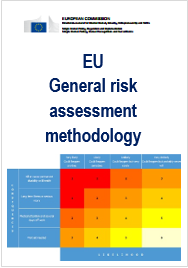
EU general risk assessment methodology
This EU general risk assessment methodology implements Article 20 of Regulation (EC) No 765/2008.
Article 20 specifies that the decision whether or not a product represents a serious risk must ‘be based on an appropriate risk assessment which takes account of the nature of the hazard and the likelihood of its occurrence’.
In particular the risk assessment of a harmonised product does not replace the evaluation of the compliance of the product with the requirements laid down in EU legislation and the relevant harmonised standards. Product compliance or non-compliance remains the basis on which authorities decide whether corrective action is needed.
The risk assessment of a harmonised product complements the product compliance evaluation, as it allows the assessment of how serious the possible consequences of non-compliance could be. It therefore helps to determine the most appropriate type of follow up (rapid intervention, RAPEX notification, proportionate corrective action). More details on possible corrective action depending on the level of risk are given in section 4.
The risk assessment of a harmonised product is inherently linked to the evaluation of its compliance with legal requirements.
1. PURPOSE AND SCOPE OF APPLICATION OF THE METHODOLOGY
2. BASIC PRINCIPLES FOR A GENERAL RISK ASSESSMENT METHODOLOGY
2.1. Terminology
2.2. A generalisation of existing methodologies beyond health and safety
2.3. The relevant phases of risk assessment
3. RISK ASSESSMENT PROCESS
3.1. Step 1: Defining the Product
3.2. Step 2: Identifying the hazard(s)
3.3. Step 3: Identifying the subject at risk
3.4. Step 4: Describing how the hazard may harm the subject, i.e. the relevant harm scenario
3.5. Step 5: Determining the potential harm
3.6. Step 6: Determining the severity of harm
3.7. Step 7: Determining the probability of harm
3.8. Step 8: Determining the risk level by combining the severity of harm and the probability of that harm occurring in the scenario described
3.9. Uncertainty concerning risk assessment
4. FROM RISK TO ACTION
European Commission 2016
Info e download
|




































